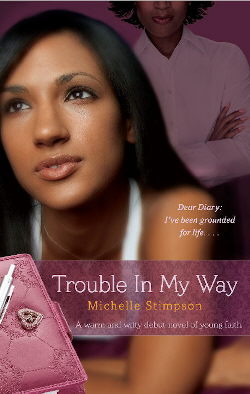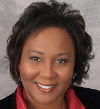|
Three
years ago, students at
Redan High School in Stone Mountain,
Georgia, were required to have parental permission to check out from
the school library books with explicit material. But, according to a
Redan student, the safeguard was subverted by forgery and parents who
willingly gave permission for their teens to read material written for
adult audiences.
When Sylvia Evans, a middle
school teacher in Dallas, confiscated a
book that was circulating around her classroom during instruction, she
was shocked to read the highlighted passage that caused her students to
giggle all over the room. Imagine her surprise when Miss Evans asked
the owner of the novel where she got it, and the twelve-year-old
replied, “My daddy bought it for me.”
Miss Evans didn’t believe the
girl, but a phone call home confirmed
the child’s claim. “I’m just glad she’s reading,” the father declared.
While we are all encouraged to
see teens reading, parents should be
concerned when their kids read material containing explicit sex and
violence. “Reading is much more interactive than listening to music or
watching television. When we read novels, we fill in the missing
details with what we know—our friends, our surroundings, our
backgrounds, ourselves—to create personalized mental images that help
us comprehend what we’re reading,” says Dr. Elizabeth Luse, a reading
specialist in Garland, Texas. “Taken together with the fact that teens
are in the process of discovering and establishing their identities,
it’s not a good idea to add destructive images to that process. The
things they see or envision during these final formative years can
still become permanent images inscribed on the brain’s hard drive.”
Music, movie, television, and
video game producers have taken a step
to inform parents of inappropriate content by implementing a rating
system. Technology experts have developed means for parents to block
certain Web sites. Until the book industry follows suit, however, the
onus for supervising what children read rests squarely on parents’
shoulders.
But while parents may be
verbally cautioning their children against
reading explicit material, this scenario is perhaps a classic “do as I
say, not as I do.” Adults in a free society are certainly at liberty to
read whatever they wish to read. To place the topic in a larger
context, however, one has to wonder why the African-American reading
public (adult and juvenile alike) is so saturated with explicit reading
material, often labeled “urban” literature. In the last forty years,
African-Americans have made great strides toward refining our image—for
ourselves, and for the world. There is perhaps no greater testament to
this than the recent election of Barack Obama. But walking into a
Black-owned bookstore or toward the African-American section of a
national chain, one might think that the publishers of African-American
fiction did not get the O-memo.
Toni, a stay-at-home mom from
Oklahoma City, recalls a recent
incident. “I was shopping with a Caucasian friend and she followed me
to the African-American section of the bookstore. I can honestly say
that I was embarrassed to stand back and look at all the degrading,
porno-looking book covers displayed on our two
|
little
shelves
in the bookstore.” Such incidents raise the questions: Is this really
how we see ourselves? Is this how we want others to see us? Perhaps
most important, is this how we want our children to see themselves?
Michelle Stimpson, a former
classroom teacher turned faith-based
novelist, says she was inspired to write for young adults in hopes of
steering the next generation toward more positive literature. “I would
see them [students] reading books they had taken off their parents’
bookshelves and I knew the students were being exposed to things that
no twelve-year-old should know.” Instead of complaining about the
situation, Michelle put pen to paper and began writing vignettes for
her middle school students. She later wrote short stories for reluctant
high school readers and, in 2004, stepped on the literary stage as a
Christian novelist. With the recent release of her first young adult
novel, Trouble in My Way, Stimpson joins fellow
best-selling
authors Victoria Christopher Murray, Jacquelin Thomas, and ReShonda
Tate Billingsley in writing faith-based fiction for teens.
Stimpson’s
dedication page, which reads “For Our Girls,” is a reflection of her
desire to inspire all girls to live a life of integrity during the
difficult teen years. “I wanted to write something interesting and
funny, yet responsible. I have two teens at home, so I know how tough
it is to raise kids in this too-much-information age.”
The phenomenal success of Hill
Harper’s Letters to a Young Brother
and its subsequent female version, both aimed at young African-American
readers, also answered the call for more positive literature. A quick
browse through the dozens of comments posted at amazon.com about
Harper’s books yields an overwhelming sentiment: It’s about time
someone wrote something positive for our kids!
We the consumers have the
opportunity to influence what is written
on the hearts of the next generation’s readers and leaders. If we lead
by example and vote with our dollars, we can program our children and
grandchildren to achieve even greater success ahead.

|









